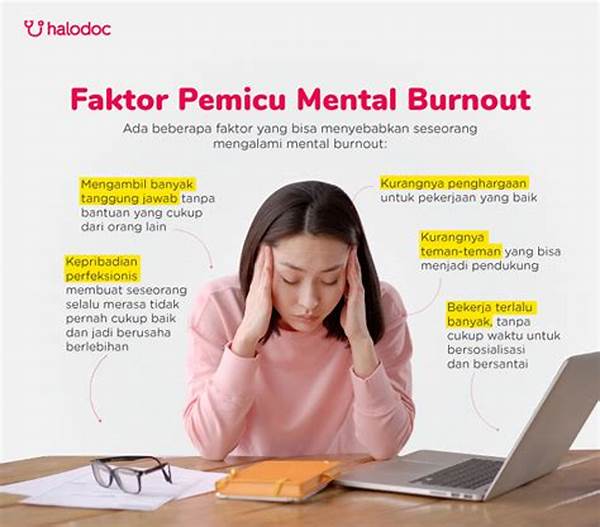Imagine being a balloon filled with vibrant colors, soaring high in the sky, bringing joy to everyone watching. But suddenly, the air begins to leak, and the colors fade away. This is what burnout feels like—a gradual deflation of energy, enthusiasm, and creativity. In our bustling lives, filled with incessant demands and expectations, it’s easy to get caught in the whirlwind. It’s here that many start to wonder: What does burnout mean? Understanding this not only helps you recognize it but can also empower you to take action before it diminishes your spark.
Read More : Cheat Burnout 3 Takedown Ps2
Burnout is more than just feeling tired or stressed. It’s a state of emotional, physical, and mental exhaustion caused by excessive and prolonged stress. Imagine a battery being used continuously without being recharged—that’s the mind and body during burnout. When someone experiences burnout, they often feel overwhelmed, emotionally drained, and unable to meet constant demands. This can impact not only personal satisfaction but also professional performance and mental health.
—
Recognizing the Signs of Burnout
In the digital age, where remote working has blurred the boundaries between personal and professional life, recognizing burnout symptoms is crucial. You might notice changes like loss of motivation, irritability, or even physical symptoms like headaches and sleeplessness. It’s important to remember that burnout can affect anyone, regardless of their role or responsibilities. Identifying these signs early can lead to proactive measures to restore balance and vitality.
—
Burnout isn’t just a buzzword flying around HR meetings. It’s a vivid portrayal of how modern lifestyles can sometimes push our limits. Let’s delve deeper into what burnout signifies, weaving through statistics, expert opinions, and personal narratives.
First, a 2018 Gallup study tells us that about two-thirds of full-time workers experience burnout on the job. Imagine juggling responsibilities with lit matches, unsure which one will burn out last. Now, multiple experts agree that burnout stems not just from workload but also from lack of control, insufficient rewards, and the imbalance of personal and workplace values.
Consider Sarah, a marketing manager, who loved her job until she slowly realized she was running on empty. “What does burnout mean for me?” she pondered. Each day, she felt like she was just going through the motions. Her story reflects countless others – people feeling trapped in the momentum of ‘more is better.’
—
The Emotional Toll of Burnout
Burnout has far-reaching consequences that affect emotional well-being. It’s like trying to paint a masterpiece with dull brushes. When people experience burnout, their emotional resilience diminishes, often leading to anxiety and depression. There’s a palpable sense of disconnection from one’s work, overshadowing daily life with a sense of monotony and disenchantment.
Let’s not forget the importance of community and acknowledgment in combating burnout. Open discussions, supportive workplaces, and self-care strategies can serve as preventatives and remedies. Picture planting seeds in a once-barren field, slowly reviving the terrain with new growth and hope. Encouragement and empathy go a long way in transforming the barren lands of burnout into fertile grounds.
—
Discovering what does burnout mean can enlighten various personal and professional goals.
Understanding these goals not only enhances productivity but also nurtures overall well-being.
The Journey Through Burnout
Think of burnout like traveling a seemingly endless road. Initially visible, but eventually surrounded by a fog of fatigue and disillusionment. Overcoming burnout requires both internal and external navigation. Internally, acknowledging feelings and setting personal limits can help steer the mind towards healing. Externally, finding allies at work who understand the struggle, or engaging in hobbies that reignite lost passions, transforms the journey into a shared venture toward recovery.
So, what does burnout mean to you? It’s a signal—a call to reconnect with what truly matters. It’s also a reminder that through all the hustle, your well-being deserves a spot on the priority list. Initiate this dialogue in your circles. Equip yourself and others with knowledge. Contentment isn’t just a destination; it’s the daily paths we choose to walk on.
—
Perspectives on Burnout
Burnout can significantly affect one’s sense of self and the ability to function effectively in different roles. For some, it’s a warning light signaling a much-needed pause and recharge. For others, it’s an eye-opener prompting vital life changes. Understanding burnout involves recognizing its impact on diverse individuals and the common threads in their experiences.
As we navigate the complexities of modern living, nurturing an empathetic and informed perspective toward burnout is crucial. Organizations need to reframe how they support employee mental health, ensuring both leaders and employees acknowledge burnout’s seriousness. Whether you’re a manager, a coworker, or a friend, realize your role in combating burnout. Offer help, validate feelings, and pave pathways toward recovery. Remember, everyone deserves a vibrant journey, even amid life’s challenges.
The labyrinth of burnout may seem daunting, but with awareness and proactive measures, finding the way out becomes possible. Equip yourself with understanding, nurture resilience, and let’s collectively redefine what thriving truly means.
